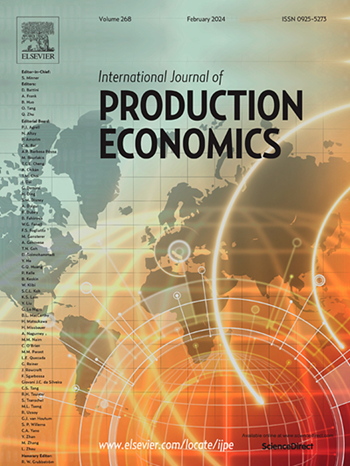Analyzing the impact of government R&D subsidy and digital transformation on supply chain risk dynamics management and firm performance in the China's chip industry
IF 9.8
1区 工程技术
Q1 ENGINEERING, INDUSTRIAL
引用次数: 0
Abstract
This study explores the interactions among digital transformation, government R&D subsidy, and supply chain risk dynamics management within the chips industry, spanning from 2013 to 2022. It scrutinizes data derived from annual reports and the China Stock Market & Accounting Research database of 364 listed Chinese chips companies. By integrating natural language processing and machine learning techniques, the paper analyzes textual changes in risk disclosures, providing insights into how firms adapt their risk management strategies in response to evolving market conditions and emerging risks. The study introduces a conceptual model that merges the resource-based view, resource dependence theory and dynamic capabilities with framework of the dynamics of innovation which consists of product innovation and process innovation. The proposed model suggests that strategic use of both R&D subsidies and digital transformation for product/process innovation, thereby enhancing Supply Chain Risk Dynamics Management (SCRDM). Empirical examination of this study reveals that while digital transformation positively influences SCRDM capabilities, enabling better management of supply chain risks, Government R&D subsidy may inadvertently dampen the dynamism essential for effective risk management. Interestingly, the results indicate a negative correlation between SCRDM and firms’ return on assets, highlighting the complexities of aligning risk management with financial outcomes. Focusing on the Chinese chips market, the findings suggest a need for policy refinement to foster rather than hinder flexibility and innovation. This research contributes to scholarly discourse and offers practical guidance for industry leaders and policymakers aiming to strengthen supply chain resilience and boost organizational performance in the chips sector.
求助全文
约1分钟内获得全文
求助全文
来源期刊
CiteScore
21.40
自引率
7.50%
发文量
266
审稿时长
52 days
期刊介绍:
The International Journal of Production Economics focuses on the interface between engineering and management. It covers all aspects of manufacturing and process industries, as well as production in general. The journal is interdisciplinary, considering activities throughout the product life cycle and material flow cycle. It aims to disseminate knowledge for improving industrial practice and strengthening the theoretical base for decision making. The journal serves as a forum for exchanging ideas and presenting new developments in theory and application, combining academic standards with practical value for industrial applications.

 求助内容:
求助内容: 应助结果提醒方式:
应助结果提醒方式:


